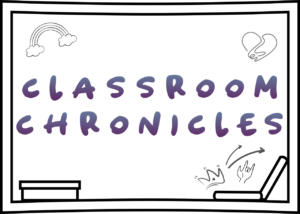Narratives have been a powerful tool in human communication since time immemorial. In the realm of education, stories hold a special place as they captivate learners, enhance comprehension, and foster critical thinking. Teaching stories, specifically crafted narratives designed to convey educational messages, have proven to be an effective pedagogical technique. In this blog post, we will explore the role of teaching stories in education, delve into the art of crafting effective narratives, examine examples of their implementation in various subjects, discuss strategies for incorporating them in the classroom, and ultimately uncover the profound impact they have on students.
The Role of Teaching Stories in Education
One of the key advantages of teaching stories lies in their ability to engage and captivate students’ attention. Human beings are inherently drawn to stories, and the power of storytelling lies in its ability to create emotional connections. By immersing students in a narrative, teachers can create a heightened level of engagement that facilitates deeper learning. When emotions are evoked, learning becomes more memorable and impactful.
Moreover, teaching stories simplify complex concepts, making them more accessible to students. By embedding abstract ideas within narratives, educators can break down challenging content into digestible pieces. This not only enhances comprehension but also promotes long-term retention. Students remember stories and the lessons they convey, which aids in the consolidation of knowledge.
In addition to facilitating comprehension, teaching stories have the potential to foster critical thinking and empathy. By presenting diverse perspectives through narratives, teachers can encourage students to think critically, challenge assumptions, and broaden their worldview. Furthermore, stories can serve as vehicles for empathy, allowing students to step into the shoes of characters and gain a deeper understanding of the human experience.
The Art of Crafting Effective Teaching Stories
Crafting effective teaching stories requires careful consideration and skill. It begins with identifying the learning objectives and themes that align with the curriculum goals. By incorporating relevant themes and values, teachers can ensure that the stories resonate with their students and convey the desired messages effectively.
Building relatable and diverse characters is another crucial aspect of creating impactful narratives. Protagonists and antagonists should be developed in a way that students can identify with their struggles, triumphs, and growth. Additionally, incorporating diversity and inclusivity in teaching stories helps students see themselves and others reflected in the narratives, promoting a sense of belonging and fostering empathy.
Utilizing storytelling techniques is key to keeping students engaged. Creating engaging plotlines with conflicts and resolutions, employing suspense and dramatic tension, and implementing effective dialogue and imagery are all strategies that can elevate the narrative experience. A well-crafted teaching story should transport students into a different world, where they become active participants in the learning process.
Examples of Teaching Stories in Education
Teaching stories find their place across various subjects. In history classes, narratives bring the past to life, making it more relatable and engaging for students. By embodying historical figures and experiencing pivotal events, students gain a deeper understanding of the context, motivations, and consequences of historical events. These narratives also provide a platform for teaching empathy by presenting diverse perspectives from different time periods and cultures.
In science and STEM subjects, teaching stories make complex concepts more accessible. By framing scientific concepts within narratives, educators can ignite curiosity and inspire innovation. Students are encouraged to think like scientists, hypothesize, and experiment. Stories help bridge the gap between theory and real-world application, enhancing the relevance and practicality of scientific knowledge.
Social and moral narratives offer opportunities to teach ethical decision-making and promote empathy. By presenting characters facing ethical dilemmas, students are encouraged to reflect on their own values, analyze the consequences of actions, and make informed choices. These narratives create spaces for discussions around social issues and foster empathy by helping students understand diverse experiences and perspectives.
Implementing Teaching Stories in the Classroom
To effectively implement teaching stories in the classroom, teachers must select appropriate stories for different age groups. By considering developmental stages, educators can tailor narratives to the cognitive and emotional capabilities of their students. Additionally, adapting stories to meet cultural and linguistic diversity ensures inclusivity and accessibility for all learners.
Incorporating storytelling across subjects is an effective way to enhance interdisciplinary learning experiences. By integrating narratives into various disciplines, teachers can foster connections between different areas of knowledge, promoting holistic understanding and critical thinking. For example, a historical narrative can be linked to literature, art, and even science, allowing students to explore multiple perspectives and make connections.
Encouraging student participation and creativity is also crucial. Promoting student storytelling and narrative creation empowers students to be active contributors to their learning journey. Collaborative storytelling activities and projects foster teamwork, creativity, and communication skills, while also allowing students to develop their unique voices and perspectives.
The Impact of Teaching Stories on Students
The profound impact of teaching stories on students cannot be overstated. By immersing students in engaging narratives, teaching stories cultivate a love for learning. When students find joy and meaning in their educational experiences, they become lifelong learners, eager to explore the world and acquire knowledge beyond the classroom walls.
Teaching stories also enhance emotional intelligence and empathy. By exposing students to diverse characters and their experiences, narratives build emotional literacy and the ability to understand and relate to others. This emotional intelligence nurtures empathy and compassion, essential qualities for creating a more inclusive and understanding society.
Moreover, teaching stories nurture critical thinking and problem-solving skills. By encouraging students to analyze and question narratives, educators empower them to become discerning consumers of information. The skills honed through critically examining stories can be applied to real-life situations, enabling students to think independently, make informed decisions, and solve complex problems.
Takeaway
Teaching stories have a transformative power in education. They captivate students, enhance comprehension and retention, foster critical thinking and empathy, and leave a lasting impact on their educational journey. By incorporating effective storytelling techniques and carefully selecting appropriate narratives, educators can harness the power of teaching stories to create engaging and meaningful learning experiences. Let us embrace the art of storytelling in education and unlock the full potential of our students.

